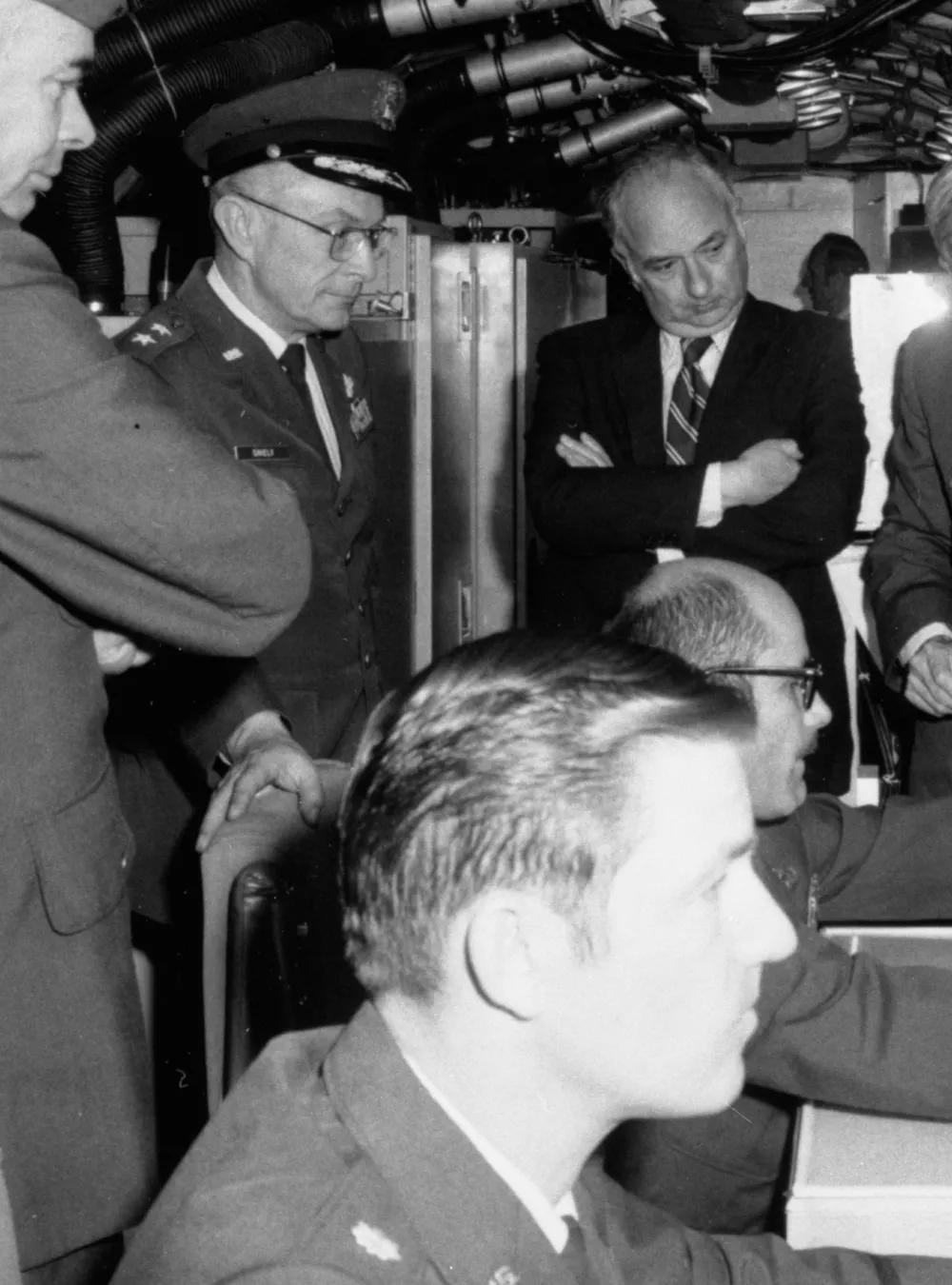While MITRE focuses on the important problems of today and tomorrow, here’s a quick look back almost 50 years. We demonstrated the value of mounting AWACS radar on aircraft—a solution that continues to protect our nation and allies.

MITRE Moments: Demonstrating AWACS to Skeptical Commanders
A look back at a pivotal moment in MITRE's—and our nation's—history.
The Year: 1973
With its distinctive profile—a Boeing 707 with a rotating radome encasing radar developed by Westinghouse perched on the fuselage—the Airborne Warning and Control System (AWACS) eventually became a symbol of American technological and military superiority.
But in 1973, skeptics both in the U.S. and at NATO didn’t see the value. As the AWACS chief engineer, MITRE took a risk and recommended demonstrations in Europe, including a prototype command and control data link called Seek Bus.
The Problem
Traditional ground-based radar was limited to line of sight, and low flying aircraft could hide behind obstructions like mountains. Plus, radar of the day was often confused by background clutter. The MITRE team recognized that it was essential for the skeptics to see how well AWACS could track aircraft with an accuracy greater than any other radar. Moreover, we needed to demonstrate the power of information in and on the future battlefield.
The MITRE-engineered Seek Bus (later known as the Joint Tactical Information Distribution System, or JTIDS) would do just that. It helped transform a sophisticated flying radar system into a major command, control, communication, and intelligence system.
Late in 1972, MITRE engineer Jack Shay, AWACS program director, persuaded Brigadier General Kendall Russell, the Air Force officer responsible for AWACS development, to use Seek Bus as the command and control data link for an upcoming demonstration in Europe.
Proving the value of the Seek Bus and AWACS technologies to General David C. Jones, Commander in Chief of U.S. Air Forces Europe, was also a top priority.
The challenge? Seek Bus was still under development—and would have to work its first time out of the box to convince Jones that it should be part of the European demonstration.
The Solution
The MITRE team believed it was a risk worth taking. After demonstrating the new technology to Jones during a U.S.-based flight early in the new year, he became a champion. Jones invited Russell to bring the Seek Bus–enhanced AWACS to Europe in April 1973 to demonstrate its ability to work with NATO air, land, and sea forces.
Within three months, MITRE built Seek Bus transmitters and terminals and installed them at test locations in Europe. MITRE also integrated the new technology into the AWACS and interfaced the Seek Bus terminals with existing NATO technology, which was far from standardized.
The European demonstrations were a major success. For instance, observers in Ramstein, West Germany were able to see the air space of an AWACS on station above the Adriatic Sea. AWACS was the only radar in the world capable of separating each target from background clutter, including low-altitude aircraft. Simultaneously, AWACS relayed the tracking data to the command and control centers tied together by Seek Bus.
The commanders were convinced of AWACS’ value.
Even so, Congress was not—and MITRE once again played an essential role. In August 1974, at the request of the Senate Armed Services Committee, Defense Secretary James Schlesinger (later chair of MITRE’s board of trustees) appointed a panel of independent experts to assess the ability of AWACS to perform its functions under battle conditions.
MITRE’s reports proved vital to the committee’s final recommendation that AWACS was a necessary and important part of the nation’s defense.
The Outcomes
After that potentially rocky start, AWACS and AWACS-related aircraft became—and remain—a vital defensive resource.
- In 1977, 552nd Airborne Warning and Control Wing received the first AWACS-supported aircraft, now called the Boeing E-3 Sentry.
- There are currently 31 E-3 AWACS in active service with the U.S. Air Force.
- NATO received 18 E-3As (with TF33 engines and AN/APY-1 radar) in 1982.
- NATO intends to extend the operational status of its AWACS until 2035 by significantly upgrading 14 aircraft between 2019 and 2026.
- AWACS-supported aircraft have been adopted by the U.S, U.K., NATO, France, Saudi Arabia, and Japan.
MITRE’s long-term impact on the AWACS program highlights our enduring values of speed, risk-taking, and agility as we carry out our mission of solving problems for a safer world.
Above: Standing inside an AWACS E-3A aircraft at Hanscom Air Force Base in Bedford, Massachusetts, 1973: (left to right) MITRE’s Senior Vice President, Bedford Operations John F. Jacobs; Brigadier General Robert L. Edge; Electronic Systems Division Commander Major General Albert R. Shiely Jr.; MITRE’s President and CEO Bob Everett; and Brigadier General Kendall Russell. (Photo courtesy of MITRE Corporate Records and Archives.)